Review: HTC One X for AT&T
May 1, 2012, 5:00 PM by Eric M. Zeman
originally published Apr 2, 2012
updated May 1, 2012, 5:00 PM
HTC's flagship device for 2012 is the One X. With it and its siblings, HTC hopes to revitalize its position in the smartphone market. HTC took a new approach to its design, and loaded it with the best tech available. The One X is also HTC's first phone to ship with Android 4.0 and Sense 4.0 from HTC. Here's what Phone Scoop thinks of this monster phone for AT&T.
Form
Is It Your Type?

HTC swung for the fences with the One X, its flagship Android smartphone for 2012. The AT&T-specific variant of the One X has several significant factors that separate it from the international version: it loses the Tegra 3 quad-core processor, but adds LTE 4G. These make a huge difference in the performance of the device, which we explore in this review.
Body
(For all intents and purposes, the AT&T One X and international One X are identical, save for some changes to the innards. Therefore, much of this review is carried over from the previously-published review of the international variant of the One X)
With the One X, HTC managed to change everything and nothing at the same time. It's clearly within the HTC design gene pool, but looks more like what would happen if a mad scientist spliced all the favorable characteristics of the HTC DNA into one, ideal strain. The results aren't perfect.
The defining design trait of the One X is HTC's use of polycarbonate to mold the back casing of the phone. Not all One Xs will be created equal, depending on your preferences. The black version we tested has a soft-touch finish, but the white version will have a glossy texture. The material and its inherent qualities will be the same, however. This high-tech piece of plastic is a contiguous shell that fully envelops the sides, edges, and back of the device. There are no seams, which gives the shell plenty of strength. It's also scratch resistant. The cleanliness of the lines give the One X a sophisticated-yet-simple look that I find very appealing.
The One X is pleasing to hold, and the polycarbonate helps keep the weight down, despite the phone's overall footprint. With a 4.7-inch display, the One X is naturally tall and wide. HTC did an excellent job keeping the One X as slim as possible, though, and it easily fits in pockets without discomfort. I'd recommend sticking it in the with display against your leg, though, as I noticed that the camera nodule on the back of the One X can become irksome if it rubs against your leg for several hours.
The display consumes the majority of the phone's front surface. The thin strip of polycarbonate at the top holds the user-facing camera and notification light. In keeping with Android 4.0, there are only three capacitive buttons on the bottom of the phone. Since Android 4.0 is still so rare, I found it very difficult to get used to this new key configuration, especially since I've been using Android phones with four buttons for over three years. Once you leap the learning curve, however, you'll be fine.
The microUSB port is on the left side of the One X, and has no hatch. The volume toggle is on the right edge. Though HTC hasn't done anything to change the shape of the volume toggle compared to its older phones — it's a thin sliver perhaps 1.5 inches long — the travel and feedback are much improved. Each direction had a distinct feel. The 3.5mm headset jack is on the top surface, as is the power/screen lock button. The top edge of the One X is not exactly perpendicular to the front; it's more like an inverted "V". The power button falls on the side of the V facing the front. This makes it slightly harder to reach with the forefinger of the hand holding the phone. The button is also too small, and offers too little travel and feedback.
One negative aspect of the One X's design is its built-in battery. HTC said that it would never have been able to make the phone as thin as it is, if it also used a removable battery cover. Battery cover or not, users have to be able to access the SIM card somehow. There's a teeny little tray hidden on the back surface of the phone. There's a hole for use with a SIM card retrieval tool (nee, paperclip). Push the clip in, and the tray pops out, much like the iPhone 4/4S. However, I found I was able to use my fingernail to dig the SIM tray out quite easily. This is both good and bad. It means that you can get the SIM card out in a pinch without a tool, but it also means that the tray could get caught on something and be loosened enough that it might fall out. Unlikely, but possible.
All this said, the One X is still easily identifiable as a phone designed by HTC. It has the HTC look and feel that we've come to know over the years. Its toned-down design language manages to be just as pleasing as some of HTC's busier designs.
One last thing worth pointing out. The AT&T version of this device is just a smidgen bigger than the international version. It's 1mm longer, and about 0.5mm wider and thicker. Certainly not egregiously larger, but I was able to spot it with my naked eyes when the two devices were held side-by-side. It doesn't affect usability or the overall feel of the device at all.
The Three S's
Screen
The One X has a 4.7-inch Super LCD with 1280 x 720 pixels. Yeah, that makes it an HD display, and a bright and colorful one at that. The pixel density is tight enough that picking out individual pixels is difficult. Everything rendered on the display is smooth and free of distracting rough edges. I used the device outside for an entire afternoon and had no problem reading the display in direct sunlight. All the menus, screens, and apps were perfectly visible. It is a really, really good display.
Signal
As expected, the One X for AT&T performed much better than the international version. It was able to connect to the network more consistently and remain connected no matter where I took the phone. Where I live in NJ, but the HSPA+ network is strong and the One X sailed along the digital airwaves. Browsing the web and downloading apps over HSPA+ was very, very quick. The phone never dropped down to EDGE during my time with it. When I tested the device under AT&T's LTE network, speeds jumped through the roof. I routinely saw download speeds reach 15Mbps, with averages coming in around 10Mbps. Uploads were also quick, peaking at 5.7Mbps and averaging 3.4Mbps. The One X didn't drop any calls while I tested it, nor did it miss any.
Sound
Calls sounded fantastic through the One X. The quality of calls was impressive, with warm, present voice tones coming through the earpiece. Interference and noise were minimal. Earpiece volume was also excellent, and can be set loud enough to be heard in most environments. Calls routed to the speakerphone were also very, very good, though I noticed a bit more background noise. Volume was good. The ringers and alert tones were plenty loud, though they fall short of rock concert volumes. You certainly won't miss calls in your own home if you have the ringer cranked up. The vibrate alert was a touch weak for my tastes.
Battery
The AT&T version of the One X packs a dual-core Qualcomm Snapdragon S4 processor at 1.5GHz per core. This chip — and the One X — are amazingly efficient when it comes to power management. If you're worried that the One X - with its 4.7-inch display, thin form factor, and 4G radio - will blast through a full charge in mere minutes, set your mind at ease. This thing is the Energizer Bunny of smartphones. It goes and goes and goes all day long with no problems. Despite having all the radios on, social networks and email updating every few seconds, and lots of time spent with the app store and browser, the One X makes it through an entire day with power to spare.
Basics
Menus
The One X runs Android 4.0 Ice Cream Sandwich with HTC Sense 4.0. Anyone who's ever picked up an HTC Sense device will feel at home, though HTC did pull back on Sense's presence within the user interface.
First, the lock screen. As with Sense 3.0, the lock screen on the One X offers a handful of customizable shortcuts. You can set up to four apps/actions on the lock screen that will launch when you drag down down to the little ring at the bottom of the screen. The defaults are phone, mail, messages, and camera, but you can adjust these at will. Rich's favorite lock screen feature of Sense 4.0 is that you can have a camera shortcut and a passcode at the same time.
The central home screen panel (out of 7) has the familiar HTC-designed clock and weather widget, but it isn't as in-your-face as it used to be. There's far less "chrome" (decorated frames) around all the icons and elements on the screen, which leaves more breathing space between home screen items. The result is a less cluttered and less crammed look and feel to the home screens. The permanent dock at the bottom of the screen holds five app shortcuts — the same four as the lock screen, plus the main app menu. These can be customized if you wish.
The controls are a bit nettlesome, and require a bit of a learning curve for users coming from Android 2.3 and earlier. As mentioned, there are three buttons below the display: Back, Home, Multitask. The first two are self-explanatory. The Multitask button, when pressed, reveals a graphical listing of all the recently used applications.
The all-important Menu button has been removed entirely. It reappears in several different configurations (most often as a set of three vertical dots) inside apps and settings pages. Sometimes this symbol is at the top of the screen; sometimes it's in the middle of the screen; sometimes it's at the bottom. This inconsistency is disorienting and highly annoying. There's also a secondary menu tool that appears in the form of a really small triangle (in Gmail, for example). These tools are not intuitive and HTC didn't do anything to improve on them.
The main settings menu can now be accessed quickly from anywhere via a button in the notification shade. The settings screens have been re-organized into groups such as Wireless, Personal, Phone, and so on. HTC has jazzed up the appearance, but there are so many options, it takes a little while to re-learn where everything is. You can also control the basic radio settings via a home screen widget that lets you toggle Wi-Fi, Bluetooth, GPS, Sync services, and turn off automatic brightness.
The drop-down notification shade collects notification as before, but with Android 4.0 you can now dismiss individual notifications by swiping them sideways.
Applications are laid out via grids on the One X. Swipe the pages to the left and you'll eventually jump from a list of all the apps to a list of all the widgets that are available. The tool lets you see what the widget looks like and tells you how big it is (e.g., 1 x 3, 3 x 3, etc.). There are more than 100 (yes, one hundred!!!) widgets available out-of-the-box, many of which are associated with apps such as the Gmail client, or calendar, Twitter, and so on. I like this set-up for configuring widgets, because you get a sense of what each widget looks like and how big it will be before you dump it onto your home screen.
Last, on the performance front, let's set the record straight. The international version of the One X has a quad-core Tegra 3 processor, with a fifth core for menial tasks. The result is an awesome performance engine for the One X. However, the AT&T variant sports a Qualcomm Snapdragon S4 with two cores at 1.5GHz each. If you think four cores are better than two, you'd be mistaken, at least in this case.
The S4 chip is leagues faster than the Tegra 3 in every respect that we tested. It simply outperforms it, and you can tell when you use both phones side-by-side. The S4-based One X for AT&T is much, much faster. Worried about battery life differences? Don't be. The S4 One X showed better battery life across the board — even when under heavy use on AT&T's 4G LTE network.
Bottom line: Qualcomm smashed it out of the park with the S4 chip, and the One X is the first phone that really shows off just how amazing that chip is.
Calls/Contacts
HTC carried forward the look and feel of its calling and contact applications from Sense 3.0 to Sense 4.0. The phone app opens to the dialer, with a list of recent calls and favorite contacts above the dialer. Touch any of the contacts above the dialer, and the dialer goes away and you can see an expanded view of your contact list.
There are large buttons for entering numbers, sending the call, and smaller buttons for activating the microphone. Want to access the menu? That would be the three little dots buried in the top left corner of the dialer. They look more like a design element than a functional part of the user interface. It took me a while to find them.
In the full contact list, a control strip lets you access different address books, as well as perform searches and access the options via the three little dots.
I really like some behaviors of the contacts app, though they are carried over from earlier versions of Android/Sense. For example, tap the image next to a contact and a little dialog box pops up with the contact's details, including their profile picture. This dialog box lets you call, email, text, or Facebook them. If you touch the contact's name, the full contact card loads. The full contact card can hold what looks like an entire biography of information.
The controls and behaviors of the One X's phone/contact apps are nothing like the stock Android 4.0 experience , such as on the Samsung Galaxy Nexus. Instead, HTC has stuck with a design it believes to be successful and useful.
As for widgets, they are plentiful. You can set direct dial shortcuts to the home screen, and there are three different styles of widgets for your favorite set of contacts.
Messaging
WIth modern Android phones, there are several ways to approach the messaging tools. You can either use the messaging apps individually, or make use of the ones that are baked into the platform software.
For example, when you first set up the One X, you have the option to sign into a number of different accounts, including: Google, Facebook, Twitter, Hotmail, Exchange, Evernote, Flickr, HTC Account, and on and on. These platform-level account tools reach deep into the operating system and permeate apps that have nothing to do with messaging. The end result is that you have the ability to send messages from apps you might not expect to be able to, such as the Note-taking app, or the movie rental store.
You can also choose to download individual applications and use them as stand-alone services. Either way you do it, there are plenty of avenues through which to send messages from the One X.
The SMS/MMS application is a very slightly tweaked version of the stock Android 4.0 app. Conversations are threaded and easy to read, but the use of white space and coloration is decidedly "HTC." The Gmail/email apps are both present and appear to be the stock Android 4.0 versions. The only IM client on board is Google Talk.
Other messaging and social networking tools include Google+ and Google+ Messenger, Latitude, and FriendStream. Each has its own widget or home screen shortcut that makes the app/service easier to access and use directly from the home screen panels.
What I like most about all of these is the sheer volume of options and ease with which most of them work. It takes only a few taps to create posts or messages from pretty much anywhere in the operating system.
Extras
Media
With respect to music, the One X has the Google Music app, and MOG Music. Sadly, the FM radio found on the international version is missing. The Google Play Store is on board if you want to purchase tracks directly from the handset, and of course you can download Amazon MP3, Slacker, Pandora, or other streaming music app from the Google Play Store.
On the video front, the One X includes the stock YouTube app, HTC Watch, and a simple video player. HTC Watch is HTC's movie rental store. You can also download video content from the Google Play Store. The selection between HTC Watch and Google Play is about the same, as are the prices. The One X also has AT&T's Live TV app, which streams video content to the device. It's ok, but content is constrained to bit-size portions.
Music and video both sounded and looked good on the One X. I was pleased with the quality of music, in particular.
Camera
Camera
The One X's camera is incredibly fast, easy to use, and offers plenty of advanced features.
Since there is no dedicated camera button, you have to open the camera from a home screen shortcut or the main app menu. It opens very quickly. The controls are laid out simply. On the top-left corner you'll see the flash controls. Rather than obstruct the screen with a drop-down menu, it simple cycles between on, auto, and off every time you press it. This is a faster way to set the flash.
There's a gear icon below it that opens the full settings menu. You can adjust resolution, video quality, the review screen, the ISO, white balance, and so on. There are some really cool advanced features, such as continuous shooting and video stabilization. You can also control the settings of the user-facing camera, which is pretty rare.
The continuous shooting mode lets you capture bursts of up to 20 shots. It it meant to help you get that perfect shot when you're not exactly sure when that perfect shot is going to occur. Pick sports, for example. Let's say you want to catch your pal doing a mad jump and stunt off a ramp on his bike. Press the shutter button when he leaves the ramp, and the camera will take 20 shots — giving you a much better chance of catching him in the middle of that rad x-up.
Below the gear icon in the lower-left corner, there's an A. Press this to access the different types of capture and scene modes, such as HDR, panorama, portrait, macro, and so on. It also features a slow-motion video option for the artistic videographer. Neat-o.
On the right side of the viewfinder, there are four tools. The top-most tool is used to instantly apply effects to shots as you take them, such as distortion, vignetting, sepia, vintage, and the like.
The shutter button is an interesting thing. The One X has a dual-shutter button. The top half shoots still images, and the lower half captures video. The result is you never have to switch between camera mode or video more, you just choose the shutter button that takes pictures, or the one that shoots video. The downside is that it's all too easy to accidentally take a picture when you mean to take video, and vice versa. The neat feature is that you can take still images while recording video (without interrupting the video.)
It's a powerful camera, and performs flawlessly. It is faster than any point-and-shoot I've ever used. Well done, HTC!
Gallery
The One X's gallery doesn't look like the stock Android 4.0 gallery on the Galaxy Nexus at all. Instead, HTC has taken the older Android 2.3 stock gallery behavior and updated it a bit.
The main view of the gallery shows stacks of photos, images, and videos floating on the screen. They are broken down into groupings such as Camera Shots, All Photos, All Videos, and Screenshots. At the top of the screen, you'll see a drop-down menu that says "Albums." Press it, and you'll automatically see a list of all the photo albums associated with the phone and your online accounts, such as Facebook, Flickr, DropBox, or Picasa. You can easily access all the images you have online with this drop-down tool, which is pretty neat.
Once you drill down into the album of your choice, there are four buttons along the bottom for performing select actions (share, delete, play, more). You need to tap on an individual photo to load it. You can of course share photos through any social network/messaging service you want. You can set the images as your wallpaper, print it, see the photo's location on a map, etc.
Editing features are very limited. You can crop, rotate, or apply effects. That's it. The effects run the typical selection, such as black & white, antique, etc. The effects include a few that some might define as "editing." For example, there's one effect called "auto-enhance" and another called "high-contrast" and other called "overexposed." You can't tweak them, only apply them or not.
There is no third-party photo-editing software, but there is a video editor. It lets you piece together videos you've captured with the phone into simple projects.
Photos/Video
Photos
We rated the international One X a B- for the camera. The AT&T variant earns an solid A from Phone Scoop. Photos looked great all around. You can see the shots I captured in sunny Florida are bright, clear, perfectly exposed, and simply look excellent. Indoor as well as outdoor shots came out highly accurate and balanced. They're simply great pictures. The work that HTC put into the camera portion of this phone really paid off. You'll be pleased, no doubt.
Video
Video quality was also much improved. I felt color was really good, as were exposure and the level of grain/noise. The one thing that bugged me was sound capture. If you notice in the clip below, the sound of wind is very loud and noticeable; in fact, there was but a light breeze when I recorded the clip. The One X somehow managed to enhance the wind and it sort of wrecks the audio portion of the video.
Browser/Customize
Browser
Whoa. The One X is blazing fast on AT&T's LTE network. In the browser tests I conducted in New York City, I found web pages loaded almost instantly, and everything about the browser was quick. The native browser does well enough, but Chrome Beta for Android was much faster and better for web browsing. Even when LTE wasn't available, AT&T's HSPA+ network fills in the gaps nicely, leaving the One X with nothing but super-fast web access no matter where you take it.
Customize
HTC has to do something about its customization software. First let me say that you can control nearly every aspect of the home screens, app menu, widgets, blah, blah, blah. Here's what irritates me.
Enter the settings screen, and you have tons of options. The "Personal" option is the one that lets you tweak the appearance of the system software. What are the options? First, there are Scenes. The Scenes each include a distinct wallpaper and home screen widget/app set up. Each Scene focuses on providing different information, such as your social network updates, or your work tools, etc. You can only use one Scene at a time.
Then there are Skins. Skins apply to the purely visual aspects of the user interface, such as the backgrounds, toolbars, window/widget coloration, and so on. You can add a different Skin to each Scene.
Then there are wallpapers. Even though each Scene and Skin has its own default wallpaper, you can of course choose your own.
Then there's the lock screen wallpaper, which is different from the home screen wallpaper.
Then there are tools for controlling the lock screen shortcuts and how the home screens are organized.
With these series of choices, the possibilities are endless. While I commend HTC for the flexibility it has baked into the user interface, it is a little overwhelming, and, honestly, a bit confusing.
Extras
Apps
As per usual, most of the AT&T-branded services are on board, such as Navigator, TV, MyAccount, etc. Most of these cannot be deleted, but they can be "deactivated." Deactivated apps no longer appear in the main app menu, but still reside in the phone's storage. I didn't find the overall number of apps preinstalled to be overly burdensome, and there's still plenty of memory left for the user to install his/her own apps.
Bluetooth
The One X's Bluetooth radio works perfectly. It paired with every device I could find. Phone calls, in particular, sounded excellent when sent through my car's speaker. Music sounded very good when sent to stereo Bluetooth headphones. I had no issues pushing files to/from the One X.
Clock
HTC went overboard with the clock. First, there are 18 (EIGHTEEN!!!) clock widgets on the One X. Any of them can be chosen as the home screen clock. Oh, but wait, there's also three weather widgets, each of which also includes a clock! Yeah, so, One X owners can pick from 21 different time-telling mechanisms for their home screen if they wish to do so. However, none of these applies to the lock screen. The clock on the lock screen is a smallish, digital read-out that is positioned at the top of the screen. It is readable at an arm's length, but can be hard to see in bright sunlight if you've chosen the wrong scene/skin/wallpaper.
GPS
The GPS worked flawlessly. The One X's GPS radio was able to lock on my position in less than 10 seconds, and was accurate to within about 10 feet. That's about as much as you can ask from a cell phone. Paired with Google Maps, which is the only navigation tool on the One X, the location capabilities are excellent. Thanks to the speedy network access, fast application processor, and accurate GPS radio, real-time directions were spot on and as close to "real-time" as I've ever seen from a cell phone. The One X makes an excellent navigation device.
Video
Here is a video tour of the HT One X (international version).
Wrap-Up
The HTC One X from AT&T is a whopper of a phone. It takes every feature to the Nth degree in hopes of attaining smartphone perfection. It comes close.
I like the hardware a lot. It is solid, light, and resistant to the trials and tribulations of daily life. The screen is colorful, bright, and rich. The radio performance was good across the board.
The camera software is amazing, and the results match the experience of taking the pictures. The messaging tools are great, but the calling and contacts tools are still too much like they were in Sense 3.0. Neither Android 4.0 nor Sense 4.0 are perfect. They never will be.
Overall, the One X is an excellent effort from HTC. It's easily the best hardware to come from HTC in the last year. The One X clearly jumped to the top of the smartphone hill at AT&T's stores. It's "the one" to get if you're an Android fan.

Comments
(continues)
It should be a menu option.
Eric M. Zeman said:
Discuss!
lol I like it but it's on the wrong carriers. Belongs on Big Red. Geeks don't like it cause they're either waiting for an S4 with the faster Adreno GPU or they're waiting for the Galaxy ...
(continues)
(continues)
AMAZE VS ONE X ?
HTC Flagship device for 2012?
You're pretty much saying that For this Entire Year after this phone is released, HTC will not release a single phone with better Specs.
I really, really doubt the One X will be HTC Flagship phone for this entire year. No, sorry, It won't be. HTC won't shoot themselves in the foot like that.
Sealed Battery?


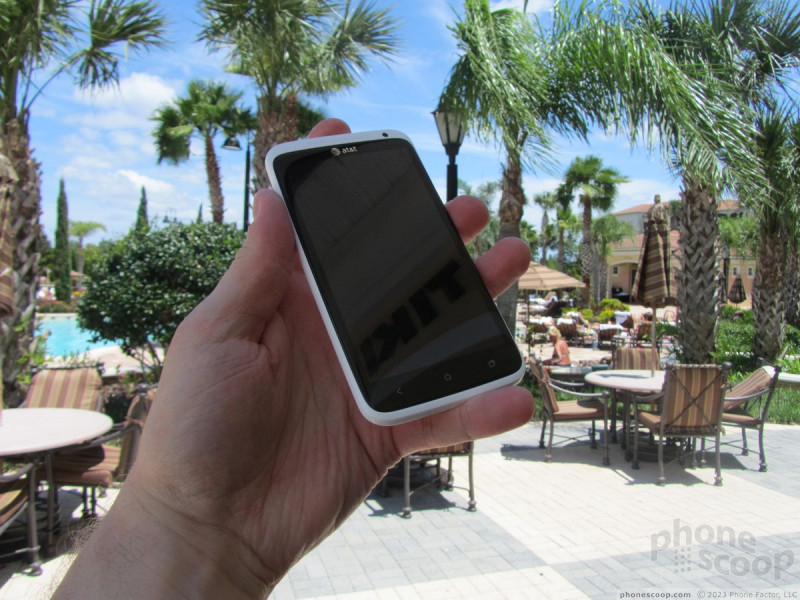

















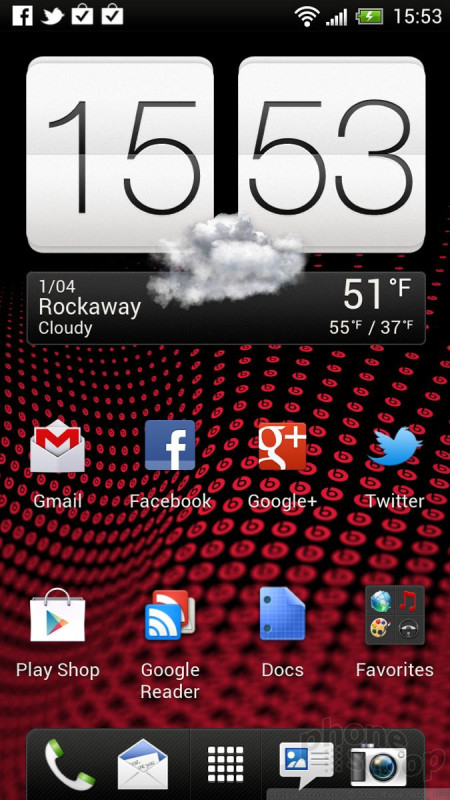






























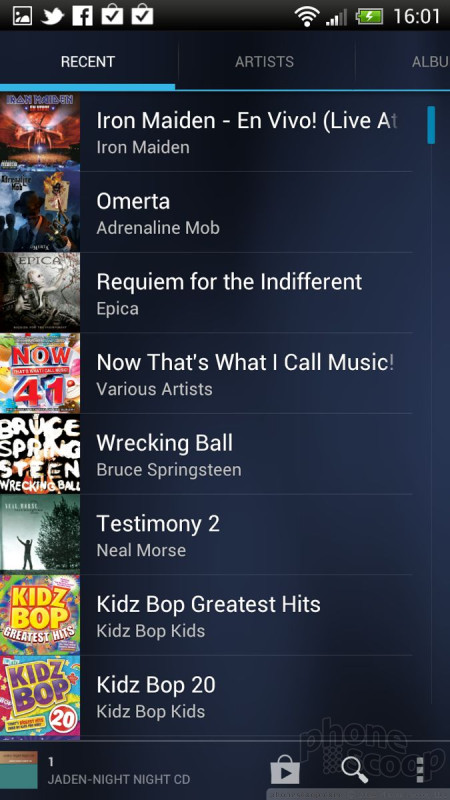








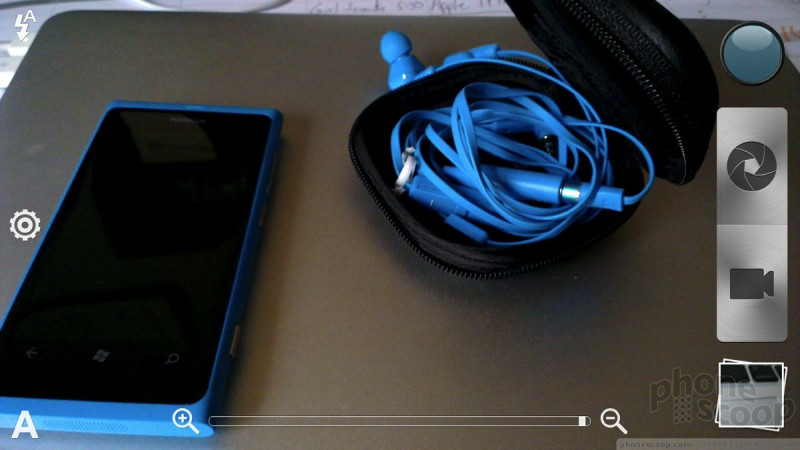





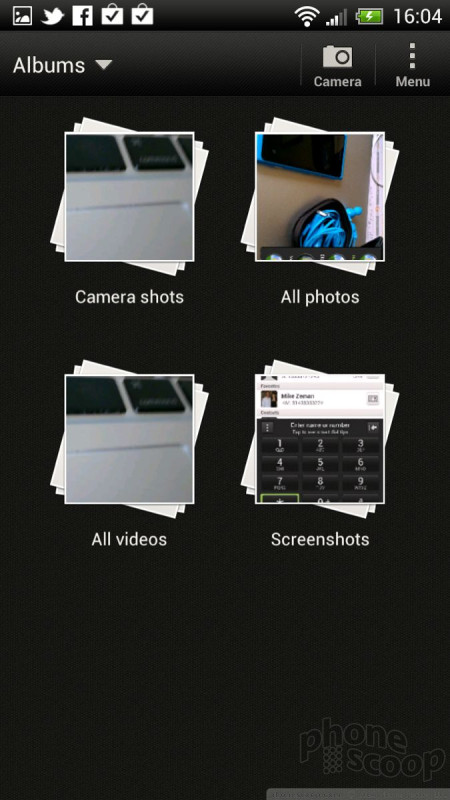















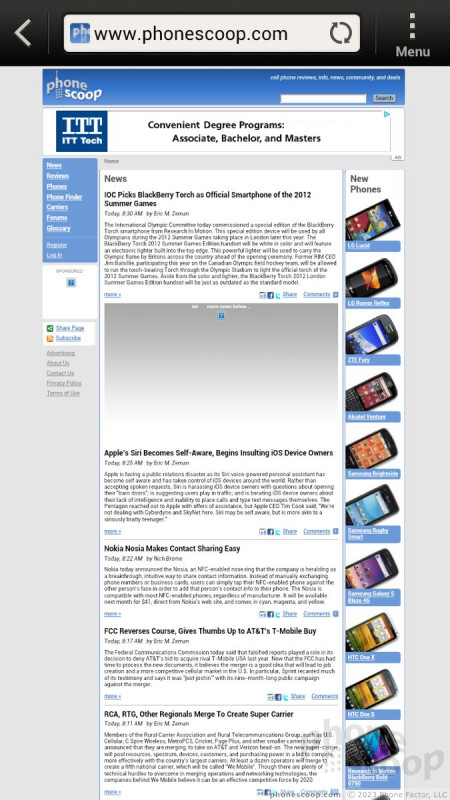






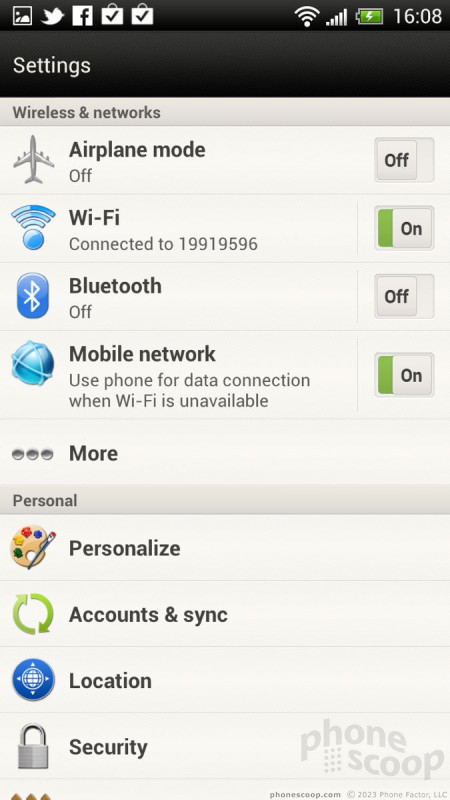






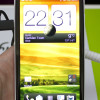 Hands On with the HTC One X and Sense 4
Hands On with the HTC One X and Sense 4
 Liveblog: HTC
Liveblog: HTC
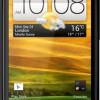 HTC Updates the One X, Calls it the One X+
HTC Updates the One X, Calls it the One X+
 HTC One X
HTC One X




